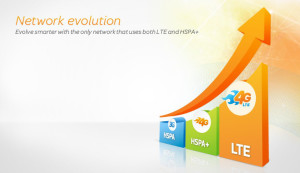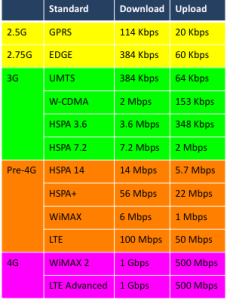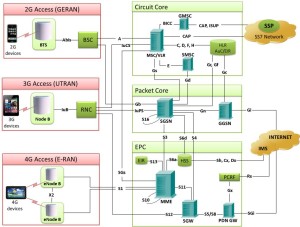 I recall an advert in Uganda where they were advertising i think it was video / cinema services and the advertiser said, we offer, 2D, 3D, 5D, HD, DVD, Any D, very funny when one is to think about it Any D but in reality he was saying to listeners, If it is out there we have it. In the past when we only had Edge (technically GSM 2.5) in the days before 3G, we anticipated delays, we anticipated the lack of content, we anticipated the limitations of our devices, we anticipated the breakages in connectivity. Fast forward to 2015, what do we anticipate on a 4G network, strangely nothing but we expect, we expect excellent download speeds, we expect excellent movie streaming if my bundle allows ;), we expect zero delay in my messages leaving my phone but above all from a technology point of view we expect that what ever we want exists online.
I recall an advert in Uganda where they were advertising i think it was video / cinema services and the advertiser said, we offer, 2D, 3D, 5D, HD, DVD, Any D, very funny when one is to think about it Any D but in reality he was saying to listeners, If it is out there we have it. In the past when we only had Edge (technically GSM 2.5) in the days before 3G, we anticipated delays, we anticipated the lack of content, we anticipated the limitations of our devices, we anticipated the breakages in connectivity. Fast forward to 2015, what do we anticipate on a 4G network, strangely nothing but we expect, we expect excellent download speeds, we expect excellent movie streaming if my bundle allows ;), we expect zero delay in my messages leaving my phone but above all from a technology point of view we expect that what ever we want exists online.
In the past when they told us there was an app that could allow you to listen to radio, you said, wow, there is an app that can give you all the news in the country at a go, you said wow, your phone could have 4GB, a radio, an mp3 and a color screen, you said wow, these days if i am thinking of car engines, i expect to find an app about car engines, if i am thinking about mars, i expect an mobile app or content on mars, if i am thinking about the next evolution in robotics, i expect to find a projection for what 2025 will hold, this is the mentality of the ever growing mind in a society that subconsciously expects that interests are shared and hence someone MUST have put up some content or an app on that topic
8G Technology doesn’t yet exist but it will at some point but what does it mean, by 3G / 4G we have speed, we have our cars at 300 kph, to go faster would be great but partly unrealistic for the majority, we have speed what is 8G giving us, the answer is, “what you expect”, as we have moved from the technology age to the information age we have found that we have various devices, a tablet, a laptop, a smart watch, a smart ring and so many other gadgets, the higher technology generations aim to bridge all that into one digital world, when i am home without my laptop or computer i should be able to go to Facebook on my TV, i should be able to open the file i was working on from any computer in the world without actually carrying portable storage, if i am watching a movie on my laptop and i need to go cook, i should be able to seamlessly continue my movie on my tablet in the kitchen without thinking about how to do it.
Higher generation technologies aim to bridge the personal data gap, give you all you want the most secure way but also the least cumbersome way to get it.
Where are we now? a subset look at where technologies are there today;
Today i can have all my apple devices synced, i receive a phone call on my iPhone and my tablet rings simultaneously much as they are not directly paired via say Bluetooth, simply being on WiFi, the apple watch is the latest gadget that allows this, seamless integration of my communication with a simcard in one device across my devices and no this isn’t an advert about apple products.
Whatsapp and telegram and many other social applications now also cross sync, i have whatsapp on my phone, tablet and on my computer and it feels the same, contacts are the same, no fresh installs, simply visit a link to download and RESUME or login and RESUME.
Siri or voice assistance in all forums from my phone to my home is becoming a more common phenomenon, Samsung TV has voice support so does the Microsoft X-Box and soon my fridge, Leo on securitynow podcasts when talking about the Amazon Echo “always listening” said, “I want Amazon to buy Sonos because I have Sonos speakers in every room. Sonos already has beautiful sound. And I want them to build that capability into Sonos speakers so that I can, as I wander through my house, say things like, “I wonder where I left my socks.” It’s great. Who cares who’s listening?” https://www.grc.com/sn/sn-494.txt, we expect to have a Jarvis (Iron Man) at home and that is already happening.
In the higher communication generations we simply expect more seamless integration of our lives with technology, the internet of things will be one of the major frontiers as our phones, cars, watches, rings, wallets, spects all merge to form one digital world where all our data is accessible
In summary to my grandmother, you won’t need a flash drive because all your data will be in the cloud “stored on your personal storage on the internet”, you wont have to cry when your computer crashes midway a document because Microsoft 360 will have an online unsaved copy for you, you will simply have your data accessible to you anywhere you are because your car can already go past 300kph all you are seeing is better dedicated roads and self driving technology that will allow you to go at 1000kph without worrying about how to control your car, some call 5G the 4As, Any time, Any rate, Anywhere, Affordable (http://www.ijaiem.org/volume3issue1/IJAIEM-2014-01-15-028.pdf)
Lets get technical
I was going to leave out the technical bit but thought why not include it for those that want to get technical, if you have watched a movie called Antitrust, there is that part where in trying to form a seamless multimedia network where every device can take any media / multimedia, they have a problem of delivering content to low bandwidth consumer devices and Gary (The Bill Gates in the movie) steals an idea when an brilliant programmer discovers that, “The answer’s not in the box, it’s in the band.” The band has always been our limitation and that is why we are having evolving generations, movies existed before streaming but how to stream them was the problem not how to make the movies.
To paint it accurately, think of your phone as your computer and your mobile operator internet router as your wireless thingy (switch or router), the problem is between your phone and the operator you can only carry so much hence your medium or Ethernet cable if you want to think of a wall socket is just not taking as much capacity.
 In 1G we have normal analogue (Desk phone) voice, in 2G we go, hey, i can send text instead of voice, in 2.5G we find a way of adding data to our small capacity interfaces, at the time we had 56kbps modems in our phones as well and data speeds of 60-80kbps GPRS, 144kbps in theory then in 3G we go to 7.2Mbps some give 14Mbps then 21Mpbs and the numbers keep increasing but what has really changed, to understand the transition we draw our Ethernet cable between the phone and operator switch (internet router) in a 2.5G network.
In 1G we have normal analogue (Desk phone) voice, in 2G we go, hey, i can send text instead of voice, in 2.5G we find a way of adding data to our small capacity interfaces, at the time we had 56kbps modems in our phones as well and data speeds of 60-80kbps GPRS, 144kbps in theory then in 3G we go to 7.2Mbps some give 14Mbps then 21Mpbs and the numbers keep increasing but what has really changed, to understand the transition we draw our Ethernet cable between the phone and operator switch (internet router) in a 2.5G network.
Phone — Wireless Communication (16kbps channels) –> BTS (Base Transceiver Station) — Microwave, Fiber e.t.c (64kbps channels) –> BSC (Base Controller Station) — Microwave, Fiber e.t.c –> SGSN (Serving GPRS Support Node GTP Protocol) –> GGSN (Gateway GPRS Support Node) –> Internet.
Image Ref: http://www.ict-pulse.com/wp-content/uploads/2011/06/Mobile-data-speed-comparison.png
The “cable” between your phone and operator traffic is managed by the GTP (GPRS Tunneling Protocol) and the limitations to you getting higher data speeds have been;
– The last hop for the GTP
– The Interface bandwidth between your phone and where your GTP reaches you.
The evolution of GSM Generations simply stands to show how they bring GTP closer to the end user while improving device access, in 4G and 5G specifications they talk of WWWW World Wide Wireless Web where you can use say WiFi, Private Area Networks (PANs) to still connect to your operator, that is operators managing the bandwidth between your phone and where your GTP starts or replacing the radio GTP part and have direct IP connectivity through conventional WiFi to the operator so as to have a much higher capacity interface between your end device and an operator. To deliver higher speeds is both a change in the air interface antennas as well how close they can get your actual IP packets to you at full bandwidth without modulation and that is where we have the generations come in, each bringing your packets much closer to your with better bandwidth, the diagram below shows 2G – G4 setups and we can see the Access leg getting better then shrinking as IP packet delivery comes closer and closer to the end user.
By: Simon Peter
@clarsp


